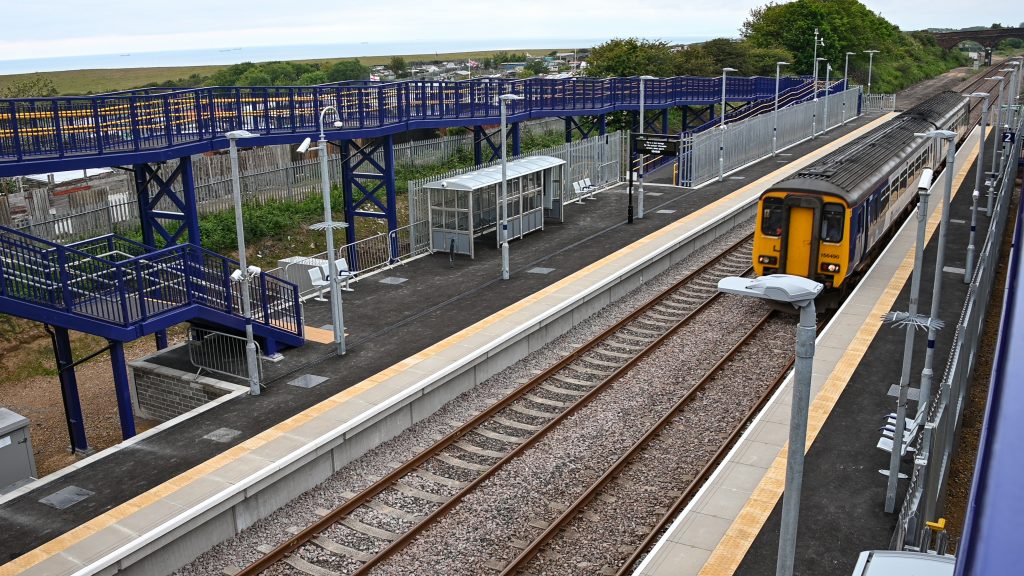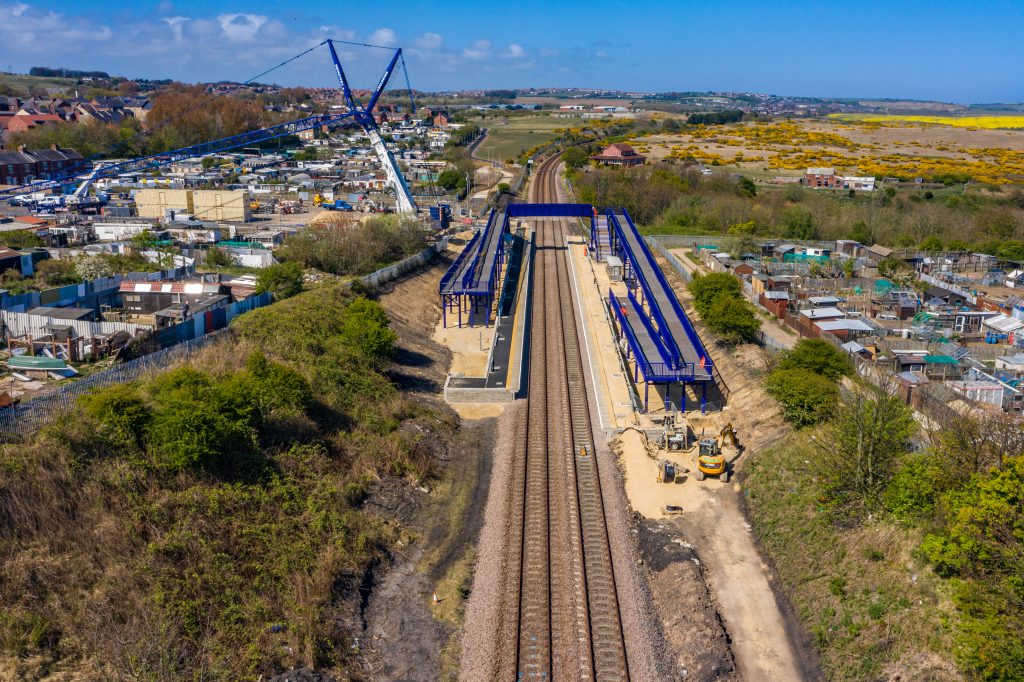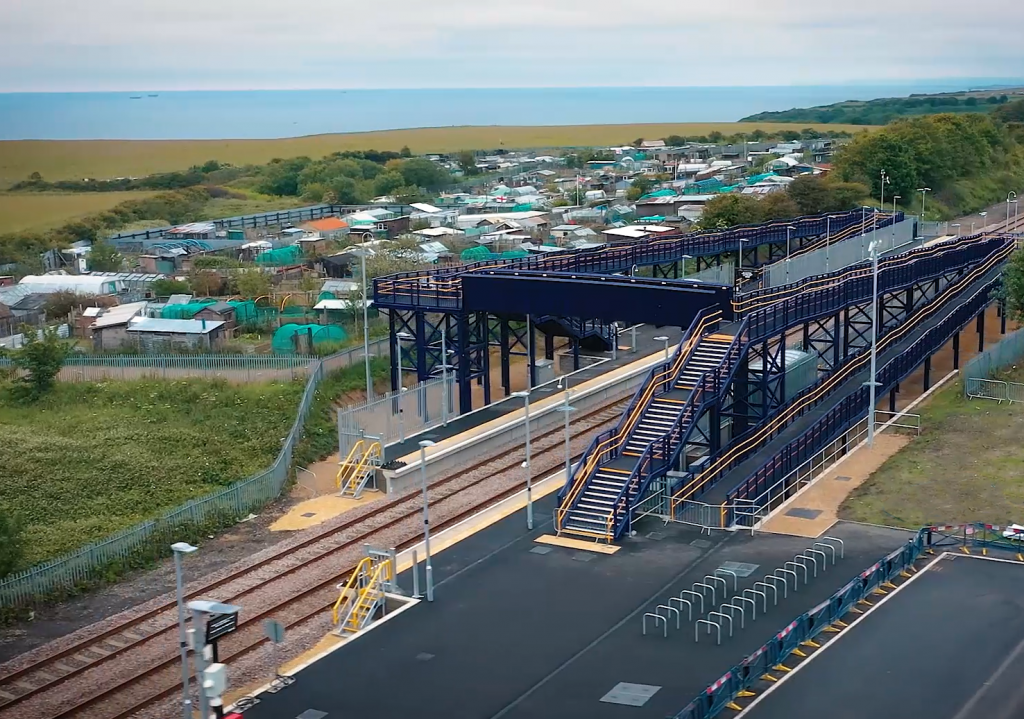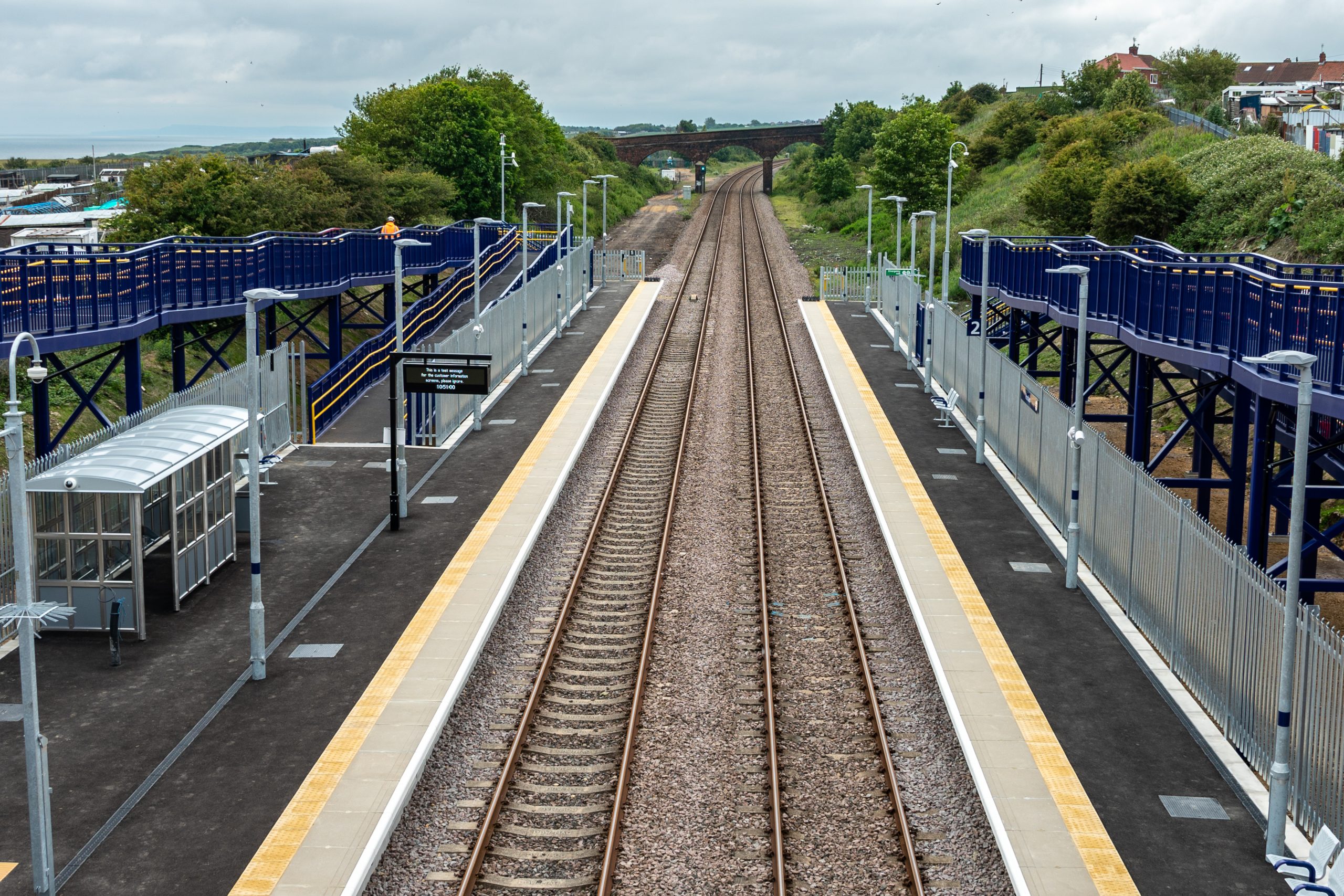The brand-new Horden railway station opened to passenger services on 29 June – just six months after our teams broke ground at the site in County Durham.
How did we complete one of our fastest ever station builds despite the challenges posed by coronavirus?
The £10.55m development near the small town of Peterlee is our latest success in reversing the Doctor Richard Beeching railway line closures across Britain in the 1960s.
They also include the Borders Railway in Scotland, which opened in 2015, and the East West Rail Project, which will reinstate a rail link between Oxford and Cambridge.
Meanwhile, Soham station in East Cambridgeshire got the green light on 29 June, just days after we selected the preferred location for the new Cambridge South station, near the Cambridge Biomedical Campus.
In normal times, we expect about 70,000 journeys through Horden each year – after almost 60 years of no immediate rail links for communities in the area.

How did we do it?
Delivering Horden so fast was a team effort between Network Rail, trains operator Northern and Story Contracting.
Durham County Council funded the project, with an additional £4.4m from the Department of Transport‘s New Stations Fund and a grant from the North East Local Enterprise Partnership.
It involved:
- Six months of planning by Story Contracting and four months of actual construction
- Two 100-metre platforms
- Step-free access
- A car park
- 85 footbridge and ramp sections – lifted into place with a 500-tonne crane
- Power and communications infrastructure, including platform lighting
- 2,500 tonnes of crushed stone, sand and gravel
- 1,000 square metres of surfacing

Horden – from plans to passengers:
January 2019: Plans for the new station get the go-ahead.
May 2019: Building the car park – the first stage – gets underway. Durham County Council builds the car park, allowing us to fully focus on the station build.
January 2020: Work on the station itself begins. The track already runs through the site, which is only 200 metres from the site of the old station.
One of the biggest factors behind the quick construction is the unusually large amount of access to the line. To build on the railway safely, we often need to close lines to train services – and for longer windows if we need to complete a substantial amount of work.
Typically, we can get about 10 or 11 hours of line access over an entire weekend, when there are usually fewer train services. Unusually, at Horden, we’re able to get about eight hours just in one mid-weeknight. This is possible because Horden is a diversion route for the East Coast Main Line so it has less traffic than many other parts of the railway – and our access causes no disruption to services.
March 2020: The UK goes into lockdown as the coronavirus pandemic rapidly worsens. Frontline railway workers are among those who keep going out to work, to continue essential construction and maintenance and keep vital services running for critical workers.
The Horden team quickly adapts to changing working practices, including social distancing, enhanced health and safety measures and the use of greater Personal Protective Equipment (PPE).

April 2020: April 3: Story Contracting installs the main footbridge, ramps and stairs – lifting them into place with a 500-tonne crane. Two 100-metre platforms complete and drainage works begin.
The site itself is already quite flat so it’s easy to build new platforms without needing lots of large-scale engineering. Aligning the existing track with the platforms is simple.
Meanwhile, using pre-cast concrete and modular pieces to build the station meant we saved lots of time. Traditionally, we would build much of a station and its platforms with bricks and blocks but this would have slowed us down significantly, especially given the very stormy weather we had during the construction.
May 2020: First fix – Story Contracting installs lighting columns, CCTV and passenger information screens.
The station misses its originally scheduled opening day after the team adapts to the coronavirus working guidelines. The project also runs into supply chain issues due to the pandemic – the information screens from China take longer to arrive than expected and the Australian company that makes the casings for the customer help points goes into administration.
June: Platform fences and station signage go up, and the station is ready to open. Councillor Simon Henig says the new station has “been a long-held ambition,” and that it will “open up significant opportunities for communities across east Durham, by providing a direct transport link to Teesside, Wearside and Tyneside”.
One of our fastest station builds
Kieran Dunkin, a principal programme sponsor at Network Rail who worked on Horden, said: “I haven’t worked on a station being built that quickly. Normally, a two-track station is a minimum of about nine months but as with Maghull [North], if you get good access – good possessions – you can normally break that a little bit. It’s one of the fastest stations ever built in my time.”
James Taylor, a project manager at Network Rail, said: “It was a lot quicker than most projects are able to deliver. That was certainly pleasing, especially in the confines of a global pandemic, which may have affected or slowed the construction down somewhat.”
Read about how we built Maghull North railway station in Merseyside in just nine months and carried out most of the works while keeping the railway line open.
Read more:
From plot to platform – how fast can we build a railway station?
Stations Day – 10 times we delivered better stations for passengers




